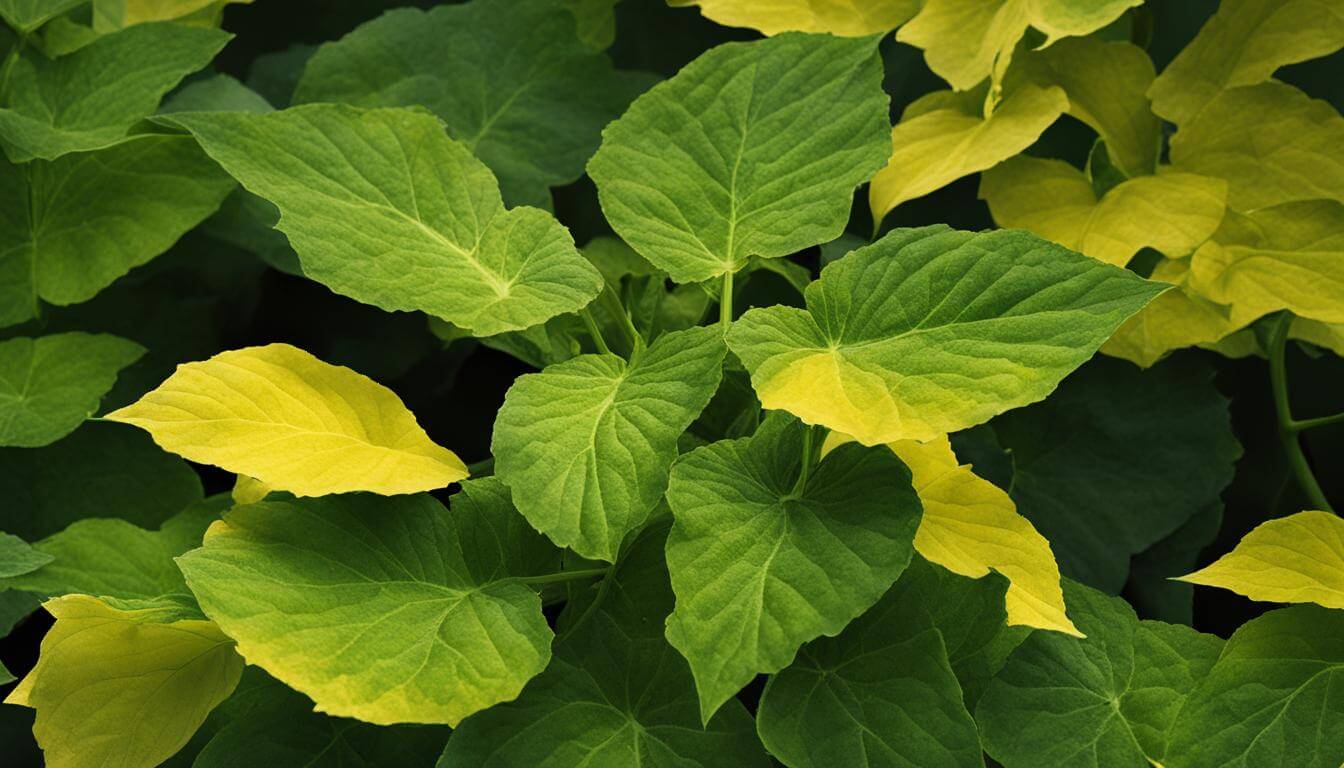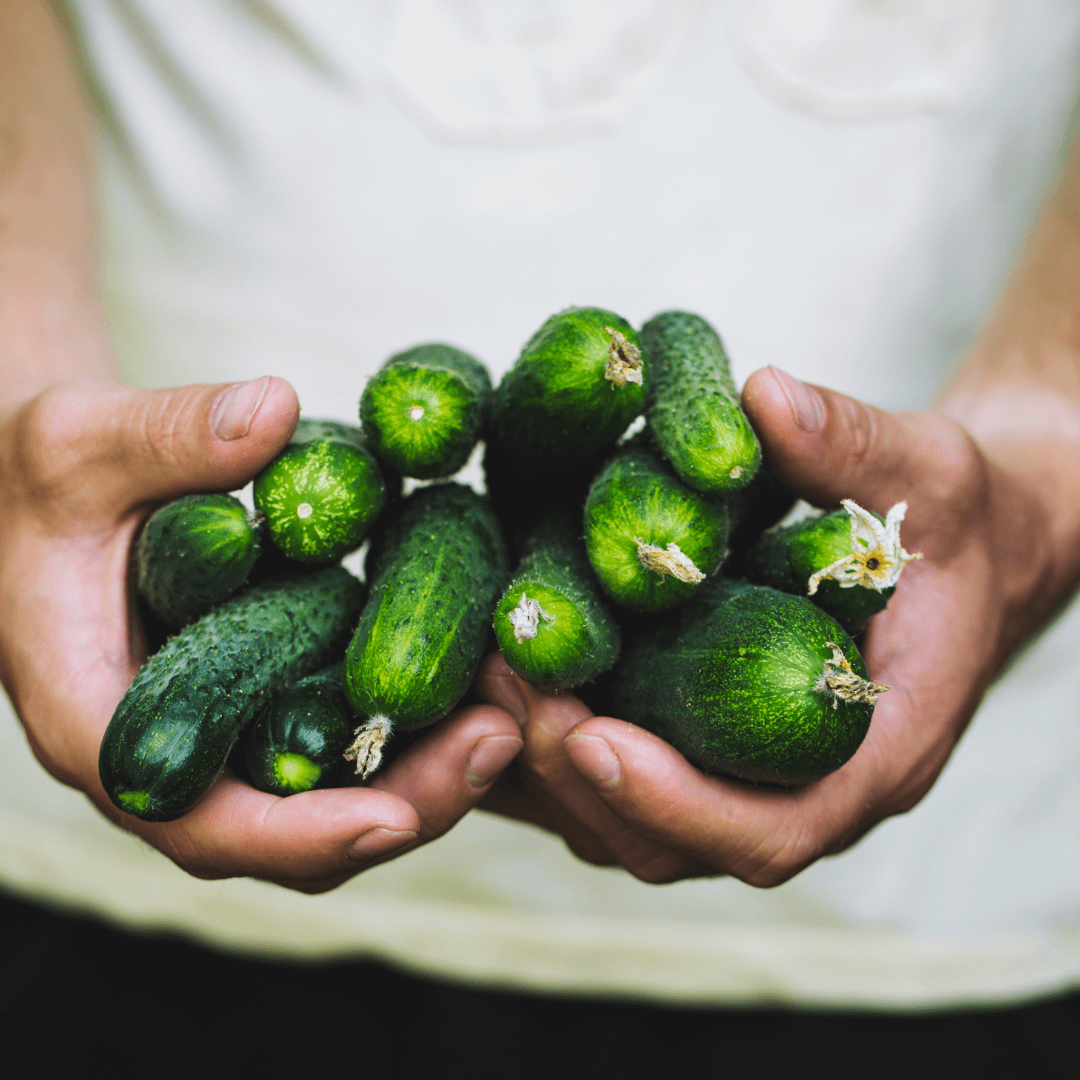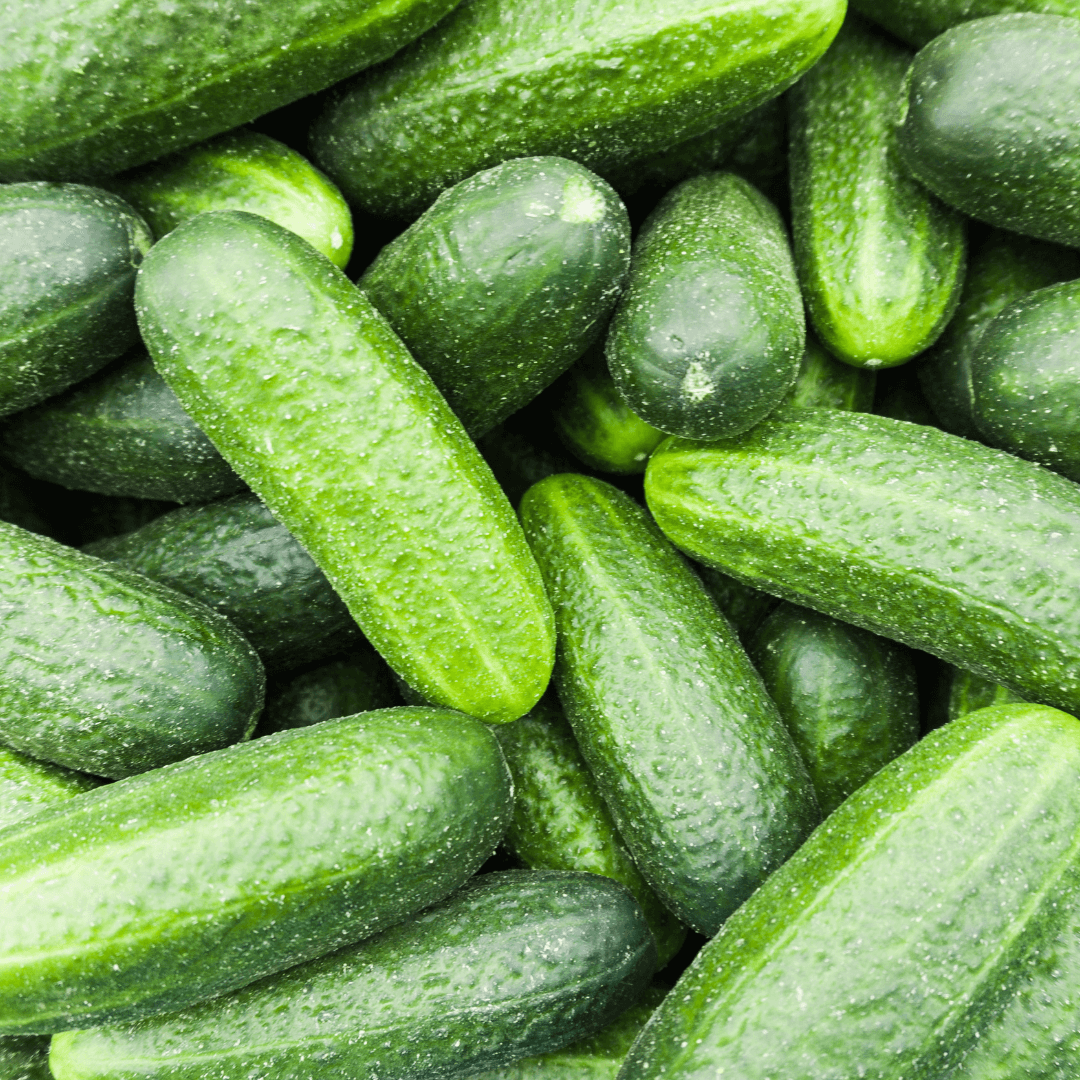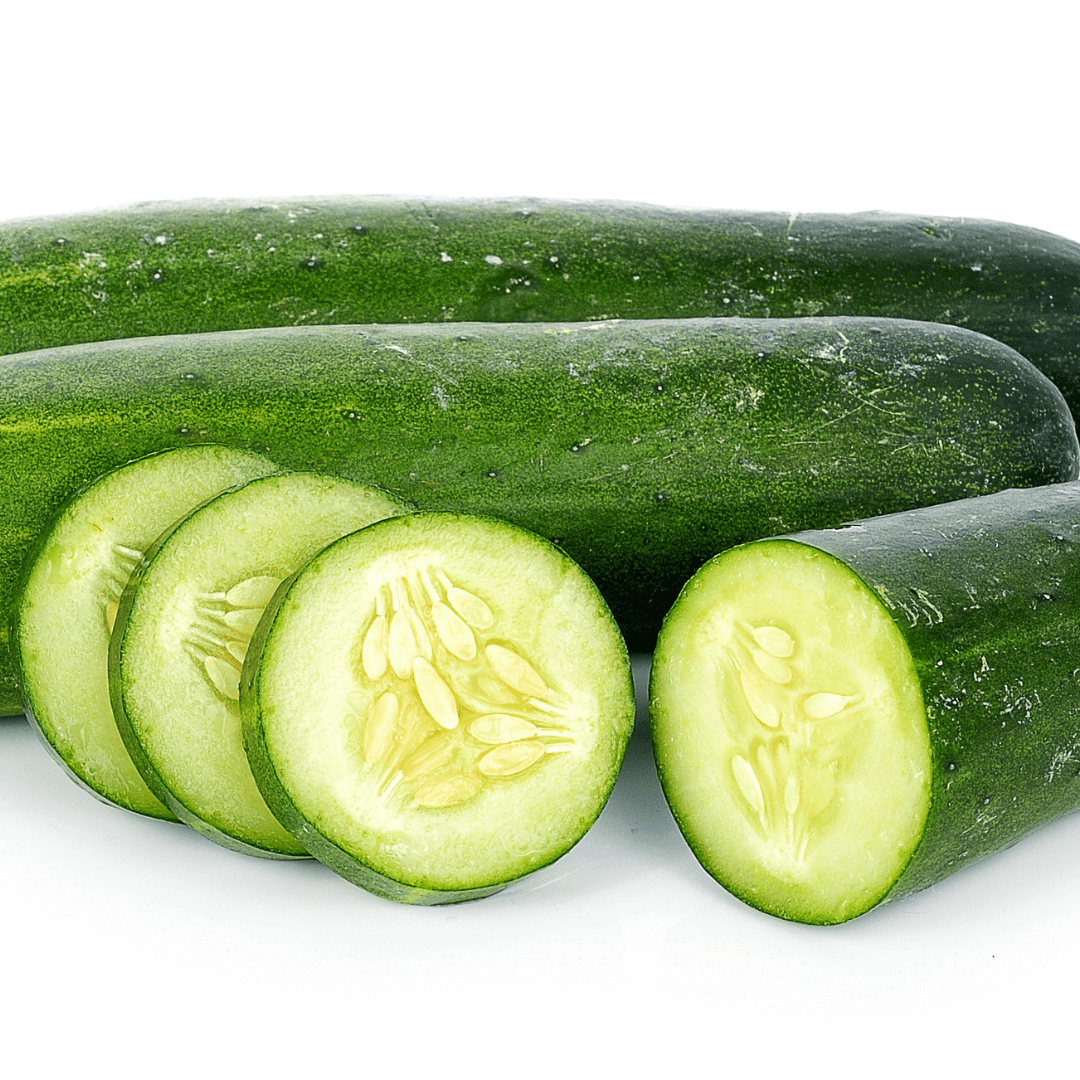For gardening enthusiasts, yellowing cucumber leaves can set off alarm bells. As we tend to our plants, nurturing them from delicate cucumber seeds to robust vines, the leaves' vibrant green color signifies health and progress. However, when those same leaves start exhibiting a pallid yellow hue, it’s a signal that our growing cucumbers might be in distress. So now you might be wondering, why are my cucumber leaves turning yellow?
At this juncture, understanding the underlying causes becomes imperative, and that is precisely what we aim to offer through this guide. By delving into this common concern, we shall provide insights and solutions to ensure your cucumber plants thrive. Moreover, we recognize the importance of starting right, so we remind gardeners that quality cucumber seeds from a reputable source like Gardeners Basics lay the foundation for a healthy and prosperous garden.
Cucumber Seed Assortment | 8 Variety Pack
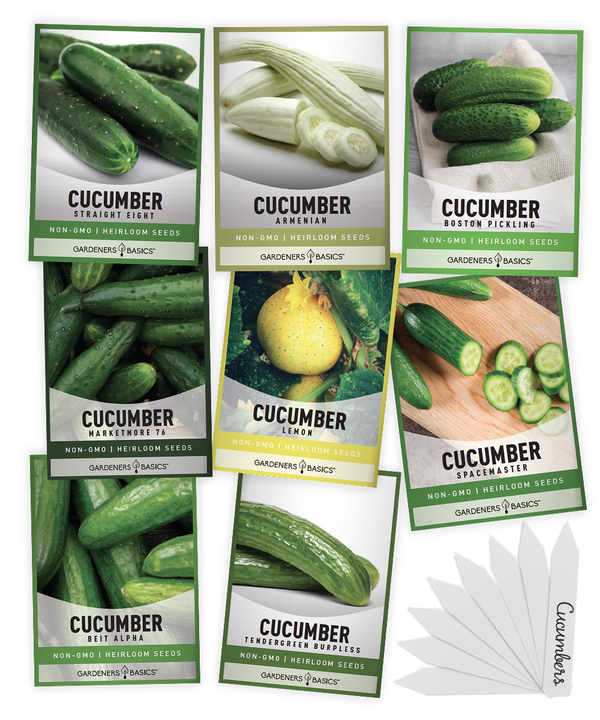
$15.95
Discover the Best Heirloom Cucumber Seeds – 8 Varieties for Fresh, Flavorful Cucumbers Introducing our 8 Cucumber Seeds Variety Pack, the ultimate addition to your garden for growing crisp, flavorful cucumbers! This pack contains a diverse selection of heirloom seeds… read more
Key Takeaways
- Identify yellowing cucumber leaves early to address potential issues promptly.
- Quality cucumber seeds are crucial for a healthy start to your garden.
- Various factors can cause the yellowing of leaves, from nutrient deficiencies to diseases.
- Regular monitoring of cucumber plants is essential for maintaining their vibrant green color.
- Understanding the cause is key to providing cucumbers the correct remedy and care.
Understanding the Yellowing of Cucumber Leaves
As dedicated cultivators, we frequently encounter a common puzzle in the growth cycle of our cucumber plants: the disconcerting trend of leaves turning yellow. To unravel this mystery, a thorough exploration into the causes behind the yellowing leaves is required, encompassing both natural plant processes and potential threats to the well-being of our cucumber plants.
The Basics of Cucumber Leaf Discoloration
At the heart of plant vitality stands the color of its foliage. The transformation of cucumber leaves from a lush green to a pale yellow can often indicate various underlying conditions. Discoloration primarily signals an interruption in chlorophyll production, the pigment responsible for the leaves' green color. Understanding this fundamental change is critical in distinguishing between benign natural aging and more grave concerns that could compromise the health of the cucumber plant from the base up.
Common Symptoms and Early Detection
Early detection of yellowing leaves on cucumber plants can mean the difference between a simple intervention and a severe impact on yield. We pay close attention to the lower leaves near the base of the plant, as these are typically the first to exhibit color changes. Observing for uneven color patterns, spotting, and the progression of discoloration are pivotal steps in identifying the state of our cucumbers at the earliest stage possible.
- Leaf yellowing starting at the base or edges
- Visible discoloration patterns on leaf surfaces
- Overall plant vigor and the absence of new growth
By staying vigilant to these transformations, we can better assess the health of our crops and take proactive measures to correct any imbalances that could lead to further degeneration of our bountiful cucumber plants.
Common Causes of Yellowing Cucumber Leaves
As we delve deeper into cultivating cucumbers, we must be aware of the common causes that can turn the ordinarily lush green leaves into a concerning yellow. Our gardening experiences have taught us that myriad factors could be the culprits, ranging from nutrient deficiency to diseases and pests.
| Nutrient Deficiency | Fungal Diseases | Viral Infections |
|---|---|---|
| - Nitrogen - Potassium - Magnesium - Iron | - Downy mildew - Powdery mildew - Fusarium wilt | Cucumber mosaic virus |
| Leads to chlorosis and reduced growth | Causes leaf spots and decay | Stunts growth and distorts leaves |
First, soil nutrient balance is a core element in any gardening scenario. Soil rich in essential nutrients is the backbone of healthy cucumber plants. However, when imbalances occur, such as a nitrogen or potassium deficiency, it manifests through a discoloration that begins in the older leaves and can advance if unchecked.
Acknowledging the intricacies of these deficiencies is not enough. We must also consider various fungal diseases that thrive in humid conditions. These can swiftly invade our cucumber plants, spreading yellow spots and, eventually, entire leaves turning yellow. Some common fungal menaces include downy mildew and powdery mildew.
The cucumber mosaic virus, unfortunately, is another adversary in our gardens. It's a widespread issue that targets the vibrancy of our cucumber's foliage, resulting in a mosaic pattern of yellow on the leaves, hence the name.
With this knowledge, we can understand how these factors can severely blow our hard work. Each of these issues affects not only the appearance but also the overall health and productivity of cucumber plants.
In our ongoing quest to maintain a lush green garden, we must stay vigilant, keep our soil well-nourished, and proactively combat diseases and viruses that threaten our crops. While these challenges may seem daunting, our gardening expertise and consistent care can help overcome them, ensuring our cucumbers remain as vibrant as ever.

Navigating Nutrient Deficiency in Cucumbers
When your garden's plentiful vines suddenly show signs of yellow leaves, it's an alarming indication that your cucumbers may suffer from a nutrient deficiency. As stewards of an ever-blooming garden, we recognize that maintaining soil nutrient health is key to ensuring your cucumber plants are spared from this distress. We take an analytical approach to counteract the risk of deficiencies, starting with understanding the signs that signal such deficits.
Signs of Nutrient Deficiency in Cucumber Plants
Achieving that balance of essential nutrients is imperative for a flourishing cucumber crop. Telltale signs such as yellowing leaves, particularly between the veins, stunted growth, and declining fruit development clearly convey that your soil nutrient levels may be off-kilter. Iron, magnesium, and potassium are among the nutrients most commonly lacking that direct us toward measures to rebalance our garden's soil composition.
- Yellowing leaves between leaf veins
- Slowed growth compared to healthy contemporaries
- Smaller than usual cucumbers or reduced fruit set
Taking note of these symptoms is the first step in remediation and returning your garden to its peak state of productivity.
Ensuring Your Cucumber Receives Adequate Nutrition
Understanding the ailment is just half the battle; delivering the solution requires know-how and action. Simple interventions like soil testing can reveal much about nutrient deficiencies and guide you toward the appropriate soil amendments. Heirloom varieties, recognized for their genetic diversity, could ensure your cucumber crop thrives, showing resilience in often nutrient-depleted conditions. At Gardeners Basics, one finds a selection of such robust cultivars suitable for any garden aiming for sustainability and bountiful harvests.
Fertilization with a balanced N-P-K formula and adding specific micronutrients based on your soil test results can alleviate most deficiencies. Incorporating organic compost or well-rotted manure offers a slow-release solution that can offer a continued source of nutrition to your cucumber plants. Consistent monitoring should be every gardener's creed, for it is through vigilance that issues like nutrient deficiency are caught early and resolved efficiently. Thus, we ensure that each vine, every leaf, and all the fruits of our labor can flourish in unabated green splendor.
Cucumber Seed Assortment | 5 Variety Pack
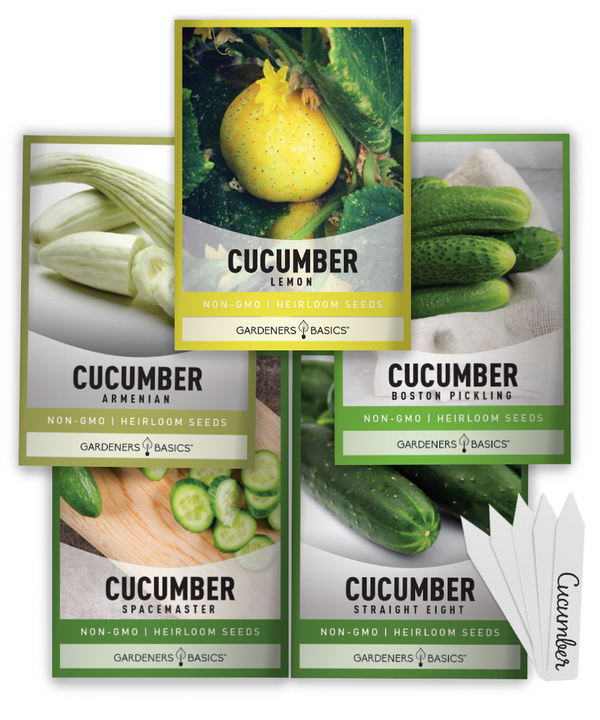
$9.95
Heirloom Cucumber Seeds Variety Pack – Perfect for Pickling, Slicing, and Fresh Eating Introducing our 5 Cucumber Seeds Variety Pack, the ultimate choice for gardening enthusiasts seeking to grow fresh, delicious cucumbers in their own backyard. This premium seed pack… read more
Tackling Pests and Diseases Affecting Cucumbers
As we survey our treasured cucumber patches, one of our critical roles as gardeners is to defend our cucumber plants from the onslaught of pests and diseases. Among the notorious culprits are spider mites, which can cause the yellowing cucumber leaves that deeply concern us. These minuscule pests are a bane to any gardener, weaving their delicate webs and sucking the life from our plants. Fungal diseases, an equally formidable adversary, can afflict cucumbers with various symptoms that mar their once verdant leaves with yellow-hued blemishes.
Identification of these threats is paramount. Spider mites typically leave tiny speckles on the leaves, hinting at their feeding frenzy. As for fungal invaders, they declare their presence through spreadable spores that latch onto leaves, gradually draining the green from the tissue.
Early recognition and response to these conditions can mean the difference between a thriving crop and a faltering garden.
In our ongoing struggle against these challenges, we advocate for integrated pest management (IPM). This approach emphasizes the cultivation of a balanced ecosystem in your garden, interconnecting prevention, monitoring, and limited, targeted action against pests and diseases. Our ethos leans firmly toward organic solutions, protecting our cucumber plants and the environment.
- Regular monitoring for signs of pest infestations and fungal growth
- Introducing natural predators such as ladybugs to control spider mite populations
- Applying neem oil or insecticidal soap for a benign treatment option
- Pruning affected areas to prevent the spread of disease
- Maintaining proper air circulation around plants to ward off fungal spores
We strive to keep our cucumber plants robust and prolific, thriving with deep green leaves rather than succumbing to yellow pallor. To that end, our vigilance and commitment to organic gardening go hand in hand, steering our gardening practices toward success and sustainability. So, let us be ever watchful and ready to guard our cucumbers against these microscopic marauders and fungal foes.
Environmental Factors Leading to Yellow Leaves
When cultivating a garden, we often find that the thriving green color of our growing cucumbers is a badge of honor. However, even the most vibrant foliage can fall prey to environmental stressors, resulting in cucumber leaves turning yellow. Let's explore how hours of sunlight, water, temperature, and weather play pivotal roles in maintaining the health of our cucumber plants.
The Role of Sunlight and Water in Cucumber Health
Navigating gardening challenges starts with a deep understanding of the essentials: water and sunlight. Cucumbers crave the sun's energy, requiring long hours of sunlight to photosynthesize and sustain their lush appearance. Too little sunlight can undermine their vitality, prompting a pale complexion in the leaves. Simultaneously, improper watering can either drown the roots or leave the plants thirsting for moisture, potentially causing the leaves to lose their vibrant green. Achieving a steady rhythm, complementing the natural patterns of the sun with consistent watering, is key to nurturing bountiful cucumber vines.
Understanding the Impact of Temperature and Weather
Absolute in their influence, temperature, and weather can flourish or foul our gardening efforts. Ideal growing conditions involve a delicate balance where the temperature neither scorches the plants nor chills them to their stems. While our cucumbers bask in warm weather, extreme heat can trigger a survival mode, restricting nutrient flow and fading the green color to a sickly yellow. Conversely, unseasonably cool temps can stall their growth cycle, yielding similar discoloration. Adapting to the changing weather moods, protecting our crops from radical fluctuations, and offering shade or warmth ensures our cucumbers can continue their journey towards a healthy harvest.
Monitoring environmental changes and adjusting our care to safeguard against yellowing leaves are part and parcel of the gardening experience. Armed with this insight, we're better equipped to create optimal conditions for our cucumbers, from the hours of sunlight they bask in to the water that nourishes them and the temperature and weather patterns they endure. It's a continuous journey of learning and adaptation, all for the love of a vibrant, green garden.
When to Be Concerned About Yellowing Leaves
As we traverse the garden path, closely observing our growing cucumbers, a common question arises: when should we be genuinely concerned about cucumber leaves turning yellow? To address this, we must first discern the normal growth processes from signs of distress. Gardeners must be equipped to differentiate and identify causes of yellowing leaves to ensure the vitality and yield of their cucumber patches.
Identifying the Causes of Your Cucumber Patch
Yellow leaves can be part of the cucumber plant's natural aging process, as older leaves may gradually give way to new growth. However, when young leaves start showing signs of yellowing, or the discoloration is accompanied by other symptoms such as stunted growth, it might indicate a nutrient deficiency. Such deficiencies affect the plant's ability to synthesize chlorophyll, fading the leaves' green color. Cucumber enthusiasts should know these signs to maintain a healthy garden ecosystem.
- Inspect the age of the leaves turning yellow; older leaves might indicate natural aging.
- Look for patterns in the yellowing, such as uniform discoloration or spotting.
- Assess the yellowing with the plant's overall growth and fruit development.
When to Take Action Against Yellowing Leaves
It's crucial to take action upon identifying irregular yellowing in your cucumber patch. Factors such as overwatering or insufficient water, pests like spider mites, or disease can contribute to a decline in plant health. Should we notice a sudden change in leaf color or a spread of yellowing from one part of the cucumber plant to another, it signals that it's time to intervene. Not all yellow leaves will warrant the same response, so understanding the context in which they appear is paramount.
- Check soil moisture levels and adjust watering accordingly.
- Conduct a thorough pest inspection and take appropriate organic pest control measures.
- Investigate for signs of disease and remove affected foliage to prevent further spread.
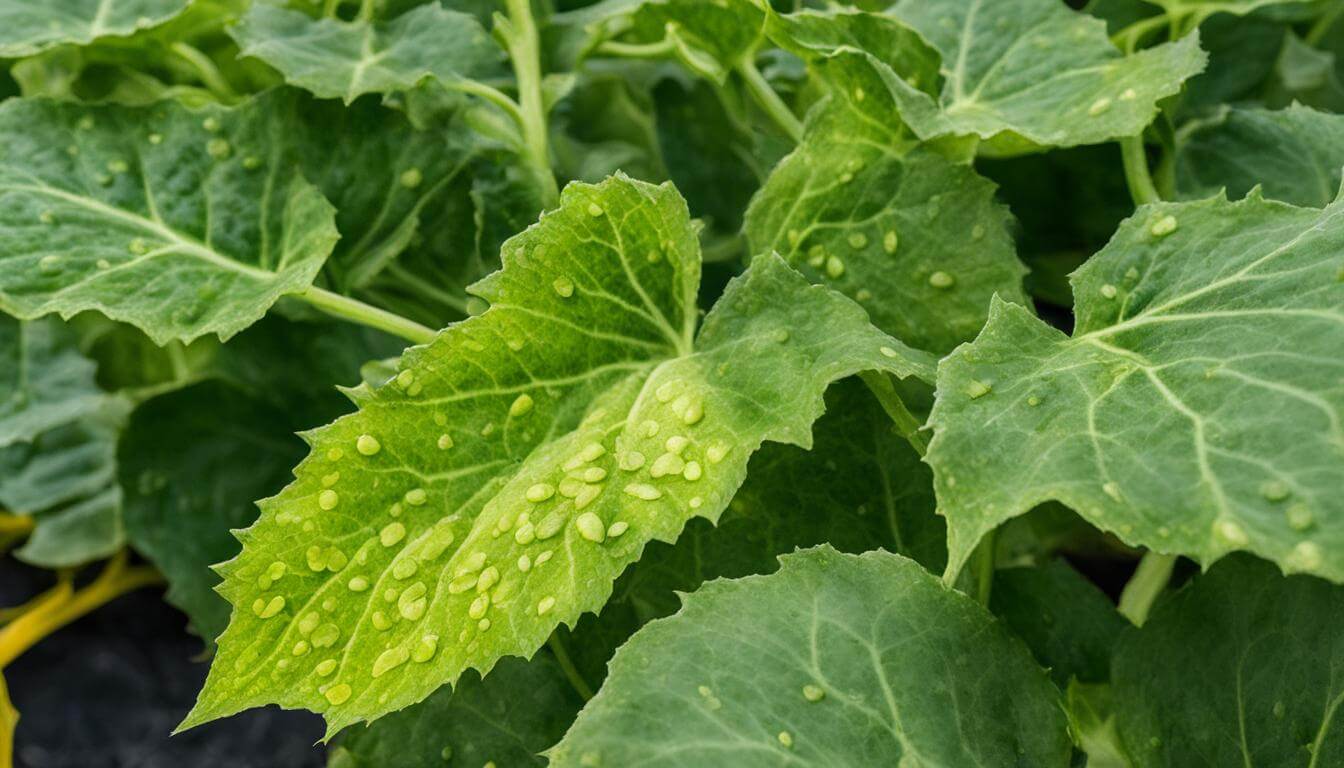
As conscientious gardeners, we aim to foster an environment where growing cucumbers can prosper. Through keen observation and timely intervention, we empower ourselves to address the challenges of yellowing leaves, ensuring our cucumber patches remain a symbol of horticultural success.
Conclusion
In our collective journey through the intricacies of cucumber cultivation, we've explored the multifaceted nature of maintaining the vibrant green color and robust health of our cucumber plants. Vigilance in regular monitoring and a nimble, timely response to any disconcerting signs are the cornerstones to ensure your cucumber garden remains a testament to horticultural excellence. Each element is critical in nurturing plant health, from recognizing the importance of quality cucumber seeds to understanding the balance of nutrients, water, and sunlight.
Remembering that the solutions to these challenges are within reach is essential. Utilizing the insights shared here, you can effectively address the causes of yellowing leaves and other signs of distress. Quality cucumber seeds, such as those offered by Gardeners Basics seed store, provide a strong foundation and contribute substantially to the eventual success of your garden's yield. This unwavering commitment to best practices in gardening will affirm the vigor and viability of your cucumbers.
Embrace the wealth of knowledge you have gained and apply it to your garden with confidence and care. After all, the commitment to your cucumber plant health is not just about nurturing a garden—it's about cultivating a legacy of growth, beauty, and abundance for seasons to come.
FAQ - Why are my Cucumber Leaves Turning Yellow
Why are my cucumber leaves turning yellow?
There are several reasons why cucumber leaves might turn yellow, including natural aging, nutrient deficiencies, soil imbalances, infections such as fungal diseases, cucumber mosaic virus, or pests like spider mites. Environmental factors such as inadequate sunlight, improper watering, and extreme temperature fluctuations can also cause yellowing.
What does nutrient deficiency look like in cucumber plants?
Nutrient deficiency in cucumber plants typically manifests as yellowing leaves, often starting at the base of the plant. Other signs may include stunted growth, weak stems, and poor fruit development. It's important to conduct soil tests to identify specific nutrient shortfalls.
How can I ensure my cucumber receives adequate nutrition?
Ensure your cucumbers receive adequate nutrition by testing your soil, using appropriate fertilizers, and providing a balance of essential nutrients. It also helps to choose heirloom varieties that may be more tolerant of local soil conditions. Providing a balanced diet tailored to the needs of your plants is essential.
How can I tackle pests and diseases that lead to yellowing cucumber leaves?
First, to tackle pests and diseases on your cucumber plants, identify the issue through close inspection and/or soil tests. Use integrated pest management practices, including organic insecticidal soaps and neem oil, or introduce beneficial predators. Ensure proper plant spacing and airflow for fungal diseases, and use fungicides if necessary. Always try to follow organic and sustainable practices.
What is the role of sunlight and water in keeping my cucumber plant healthy?
Cucumbers require at least 6-8 hours of sunlight daily for optimum growth and health. Consistent, even watering, ideally at the base of the plant, promotes healthy roots and reduces leaf stress. Too little or too much water can contribute to yellowing leaves and other health issues in cucumber plants.
How do weather and temperature impact cucumber plants?
Cucumber plants prefer warm, consistent temperatures and can be sensitive to extreme heat or cold. Sudden temperature changes can stress the plants, leading to yellowing leaves or other growth problems. It's important to provide protection from weather extremes and to understand the ideal growing conditions for your local climate.
When should I be concerned about the yellowing of leaves on my cucumber plants?
While some yellowing can be a part of the normal aging process, you should be concerned if you notice a widespread pattern or combination with other symptoms such as spots, curling, or stunted growth. Early detection and identifying the underlying cause are critical for managing potential issues effectively.
Vegetable Seed Vault Kit | 35 Variety Pack
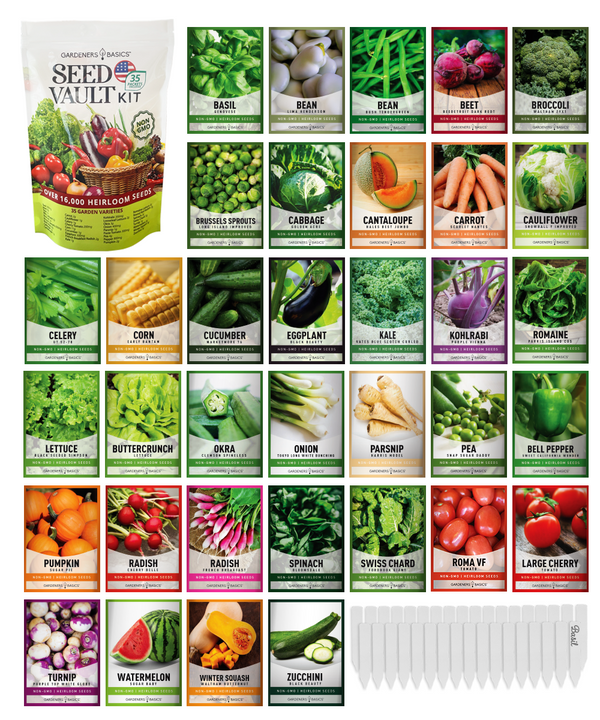
$29.95
$49.95
Ultimate Survival Seed Vault: 16,000+ Non-GMO Heirloom Vegetable Seeds for Emergency Preparedness Introducing the Seed Vault Kit, your all-in-one solution for emergency preparedness and sustainable gardening. This premium seed kit contains over 16,000 non-GMO, Heirloom, Non-Hybrid, and Open Pollinated seeds,… read more



